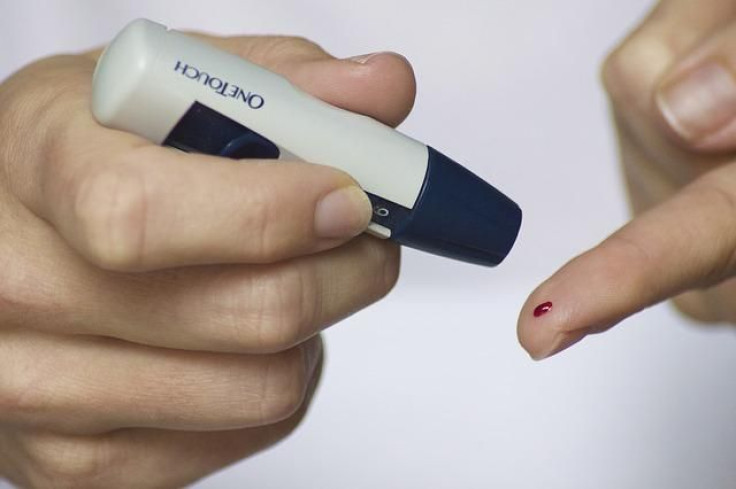Insulin Injections, Goodbye: Wearable Patch To Control Type-2 Diabetes

The worst part about diabetes is the insulin injection. Nobody likes getting pricked by a needle, let alone every time there is a sugar spike in the body. Therefore, researchers have now provided a method that just gives patients their insulin fix without any needles.
The new invention makes use of a natural substance extracted from brown algae and delivers required insulin without the need for painful and unpleasant daily injections that becomes a major ritual in every chronic diabetes patient ’s life.
Researchers with NIH’s National Institute of Biomedical Imaging and Bioengineering (NIBIB) have devised an innovative biochemical formula of mineralized compounds that interact in the bloodstream to regulate blood sugar for days at a time.
This study performed with mice showed that the biochemically formulated patch of dissolvable microneedles can respond to blood chemistry to manage glucose automatically.
"This experimental approach could be a way to take advantage of the fact that persons with type 2 diabetes can still produce some insulin," said Richard Leapman, Ph.D., NIBIB scientific director in a press release. "A weekly microneedle patch application would also be less complicated and painful than routines that require frequent blood testing, " he added.
The fix conveys a characteristic substance extricated from dark-colored green growth – totally expelling the requirement for excruciating every day injections.
The patch uses a material called alginate, a gum-like natural substance extracted from brown algae. This is mixed with other insulin stimulating agents is delivered via microneedles.
“Alginate is a pliable material—it is soft, but not too soft,” Xiaoyuan Chen, senior investigator in the Laboratory of Molecular Imaging and Nanomedicine said. “It has to be able to poke the dermis, and while not a commonly used material for needles, it seems to work pretty well in this case.”
The alginate with a formula — two drug compounds called exendin-4 and glucose oxidase — were put in one patch. The two compounds react with the blood chemistry to trigger insulin secretion. Each is matched with a phosphate mineral particle, which stabilizes the compound until it is needed.
According to the release, when blood sugar is elevated beyond a precise point, it triggers a reaction with copper phosphate and glucose oxidase inside the patch which causes slight acidity. This makes the calcium phosphate to release some exendin-4, which helps control sugar levels.
So, when the body glucose levels rise, there is a trigger in the patch which releases the exendin-4. This causes a spike in insulin in the body which regulates blood glucose levels. When the levels drop to the healthy limits it slows down the patch and stops the release of exendin-4.
“That’s why we call it responsive, or smart, release,” said Chen in the release. “Most current approaches involve constant release. Our approach creates a wave of fast release when needed and then slows or even stops the release when the glucose level is stable.”
The researchers demonstrated that a patch about half an inch square contained sufficient drug to control blood sugar levels in mice for a week.
“We would need to scale up the size of the patch and optimize the length, shape, and morphology of the needles,” Chen said. “Also, the patch needs to be compatible with daily life, for instance allowing for showering or sweating.”
Approximately 1.25 million American children and adults have type 1 diabetes. Of the 30.3 million adults with diabetes, 23.1 million were diagnosed, and 7.2 million were undiagnosed.
Diabetes is also the 7th leading cause of death in the United States in 2015 and years before that too. With 79,535 death certificates listing it as the underlying cause of death, and a total of 252,806 death certificates listing diabetes as an underlying or contributing cause of death, it is one of the leading killers on the planet.
© Copyright IBTimes 2024. All rights reserved.











